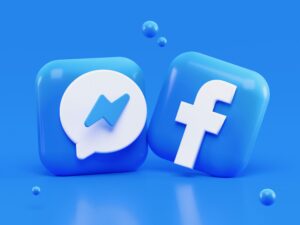The VR goggles we got to work on our tasks are called Oculus Quest. They are produced by Oculus VR, which is a brand of Facebook Technologies LLC, which in turn is a subsidiary of Facebook Inc. We thought since those VR goggles are so closely involved in our project work, a little background on the company would be pretty interesting, so here we go!
The VR goggles we got to work on our tasks are called Oculus Quest. They are produced by Oculus VR, which is a brand of Facebook Technologies LLC, which in turn is a subsidiary of Facebook Inc. We thought since those VR goggles are so closely involved in our project work, a little background on the company would be pretty interesting, so here we go!
It all started with Palmer Luckey, who developed the vision of creating VR goggles, that would be inexpensive for gamers and at the same time be more effective than other products, that were currently on the market. To reach his goal, he founded Oculus VR with four other colleagues of his. Coincidentally, John Carmack of id Software LLC, which is a video game developer based in Richardson, Texas, happened upon the new-founded company Oculus VR. He sampled an early prototype of their VR goggles called “Oculus Rift” and decided to make video games such as the BGF Edition of Doom 3 compatible with those VR goggles. At the Electronic Entertainment Expo (E3) in 2012, the Oculus Rift prototype itself, as well as another version, which was based on it but ran Carmack’s software, were demonstrated. Carmack later became the Chief technology officer (CTO) of Oculus VR.


Approximately two months after E3, Oculus VR started a crowdfunding campaign on Kickstarter to further develop their product. The company offered various incentives for the support on Kickstarter. For example, they promised supporters who donated more than $300 the “dev kit”-version of the Oculus Rift as a reward. Within four hours, the company secured $250,000, which was the intended amount. In less than 36 hours the campaign had reached $1 million in funding and ended with $2,437,429.
In March 2014, Mark Zuckerberg announced, that Facebook Inc. would acquire Oculus VR for $2 billion. At that point in time, Oculus VR had still only released a development prototype of its VR goggles. Less than a year later, the headquarters of Oculus VR moved from Irvine to Menlo Park. In Menlo Park, the headquarters of Facebook is located as well.
In 2014, Oculus partnered up with Samsung to develop the Gear VR. Gear VR is a VR headset, that uses a Samsung Galaxy device as the headset’s display and processor. The Gear VR unit itself includes all other necessary parts, such as the controller, the proximity sensor, and the inertial measurement unit for rotational tracking. The Gear VR was manufactured by Samsung and released in November 2015.
In the following years, Oculus acquired “The Eye Tribe”, a Danish eye-tracking startup, and “Surreal Vision”, a British company that focuses on augmented reality and 3D scene-mapping reconstruction. News reported, that with those new acquisitions Oculus could in the future create “mixed reality” technology in their products and could make telepresence possible. Doesn’t that sound exciting? So let’s see what the future holds.



